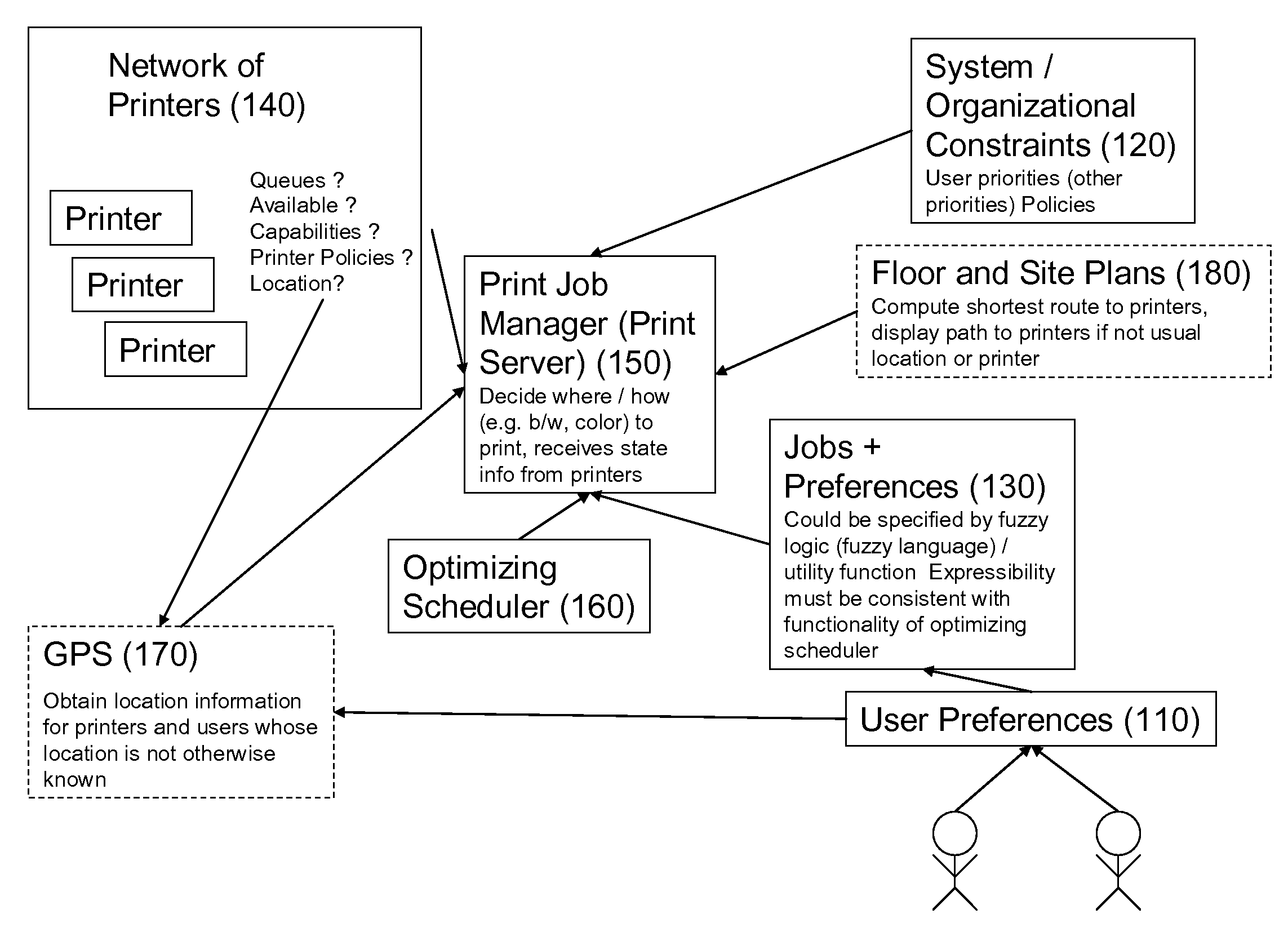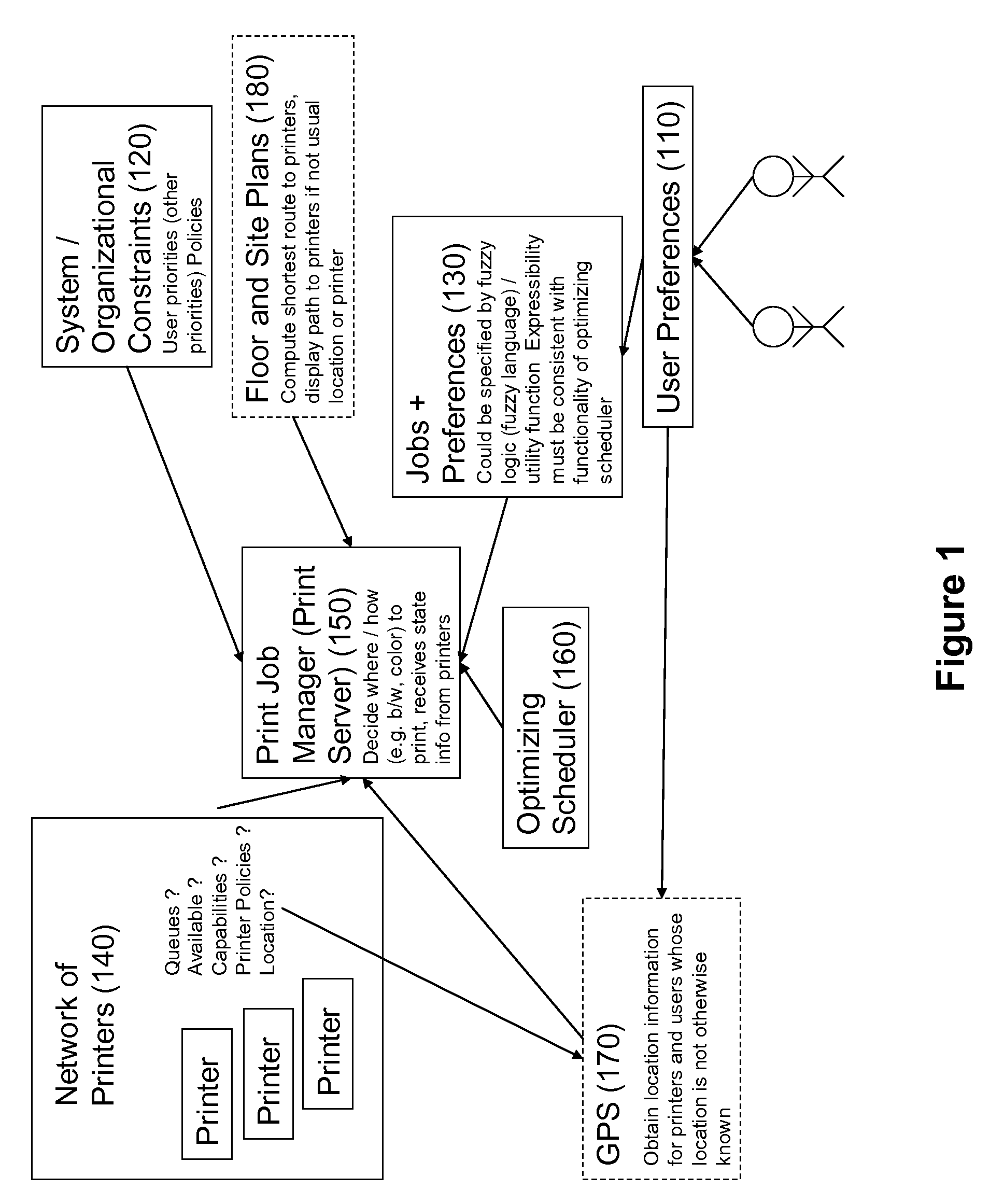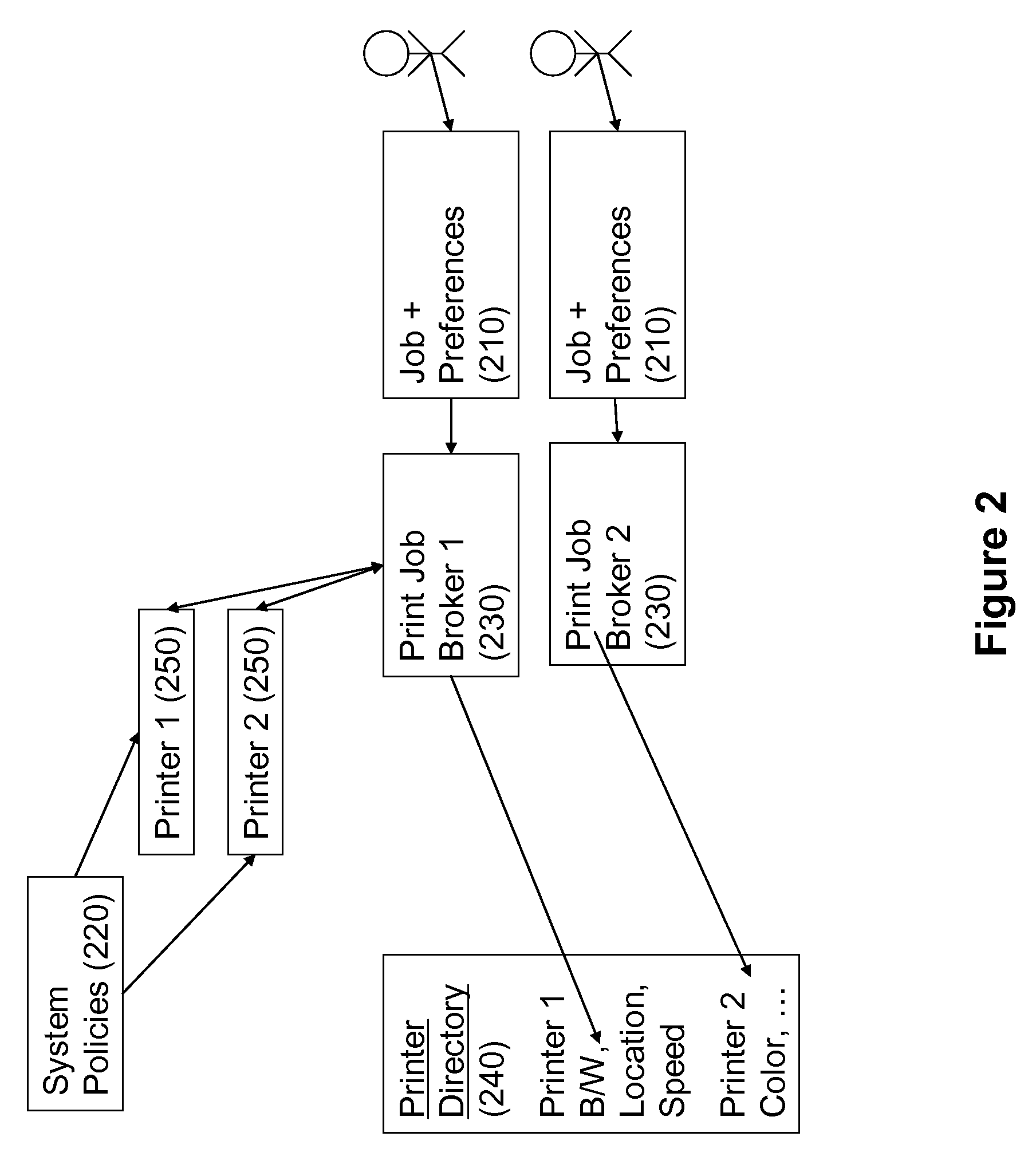Policy based system and method for optimizing output device submission, use and wait times
- Summary
- Abstract
- Description
- Claims
- Application Information
AI Technical Summary
Benefits of technology
Problems solved by technology
Method used
Image
Examples
Embodiment Construction
[0036]The following description refers to print jobs executed by printers, but the invention applies more generally to output jobs implemented by output mechanisms, which may be output processes or output devices of many kinds including devices of varying capabilities for displaying output to a variety of permanent media or refreshable surfaces. An “output process” refers to a sequence of automated and / or non-automated steps resulting in the production of some output.
[0037]Referring now to the drawings, and more particularly to FIG. 1, there is shown the flow of the system in a realization of the invention with a centralized print server. Users manage their preferences 110 in the form of one or more printing policies. Policies may for example, specify that a particular printer should be used for black and white documents and another for color documents, or may specify that one should print to the first available printer on a given floor. A more complete description of the expressive...
PUM
 Login to View More
Login to View More Abstract
Description
Claims
Application Information
 Login to View More
Login to View More - R&D
- Intellectual Property
- Life Sciences
- Materials
- Tech Scout
- Unparalleled Data Quality
- Higher Quality Content
- 60% Fewer Hallucinations
Browse by: Latest US Patents, China's latest patents, Technical Efficacy Thesaurus, Application Domain, Technology Topic, Popular Technical Reports.
© 2025 PatSnap. All rights reserved.Legal|Privacy policy|Modern Slavery Act Transparency Statement|Sitemap|About US| Contact US: help@patsnap.com



